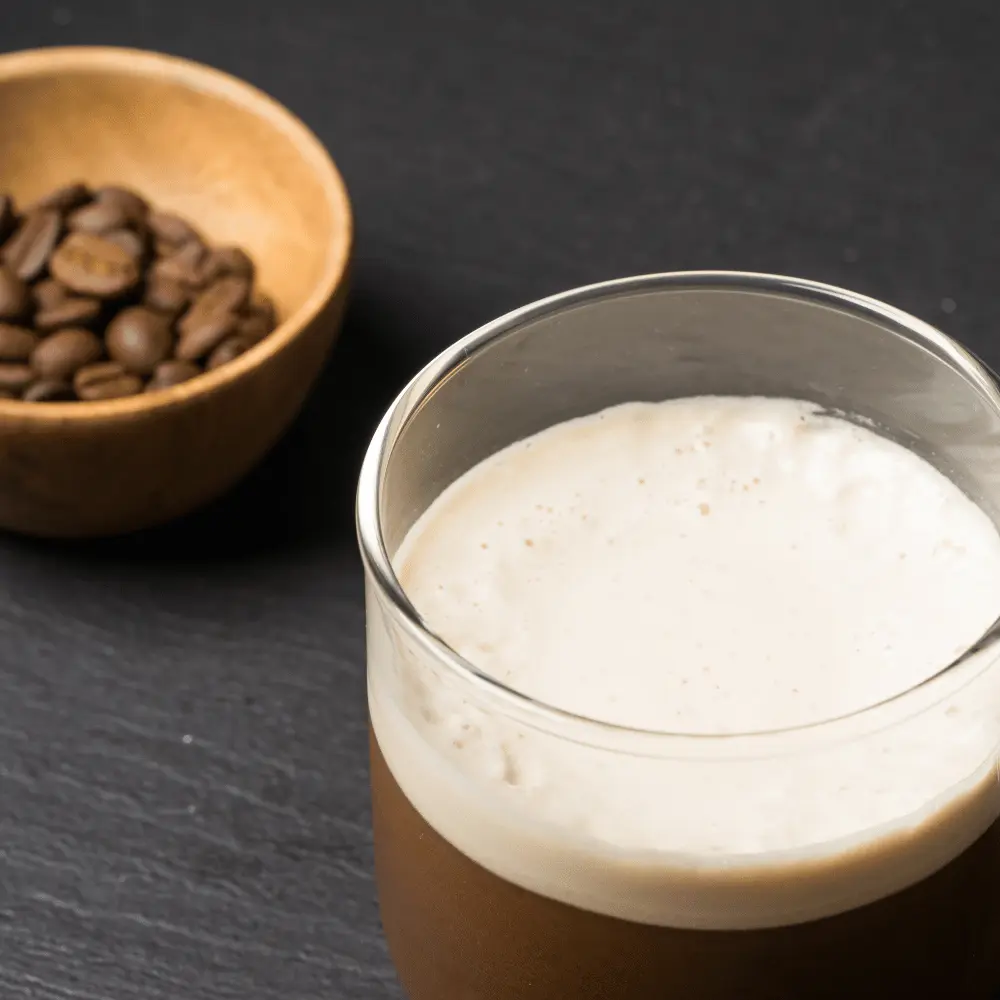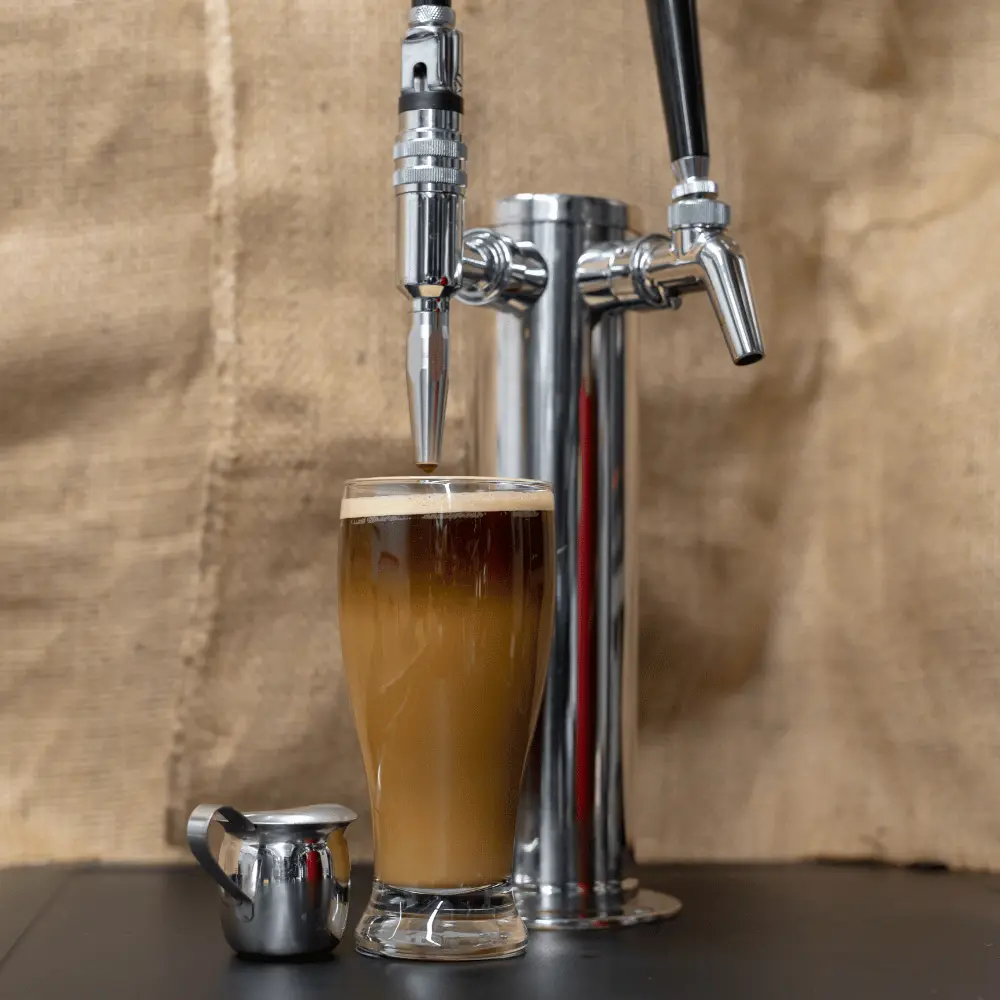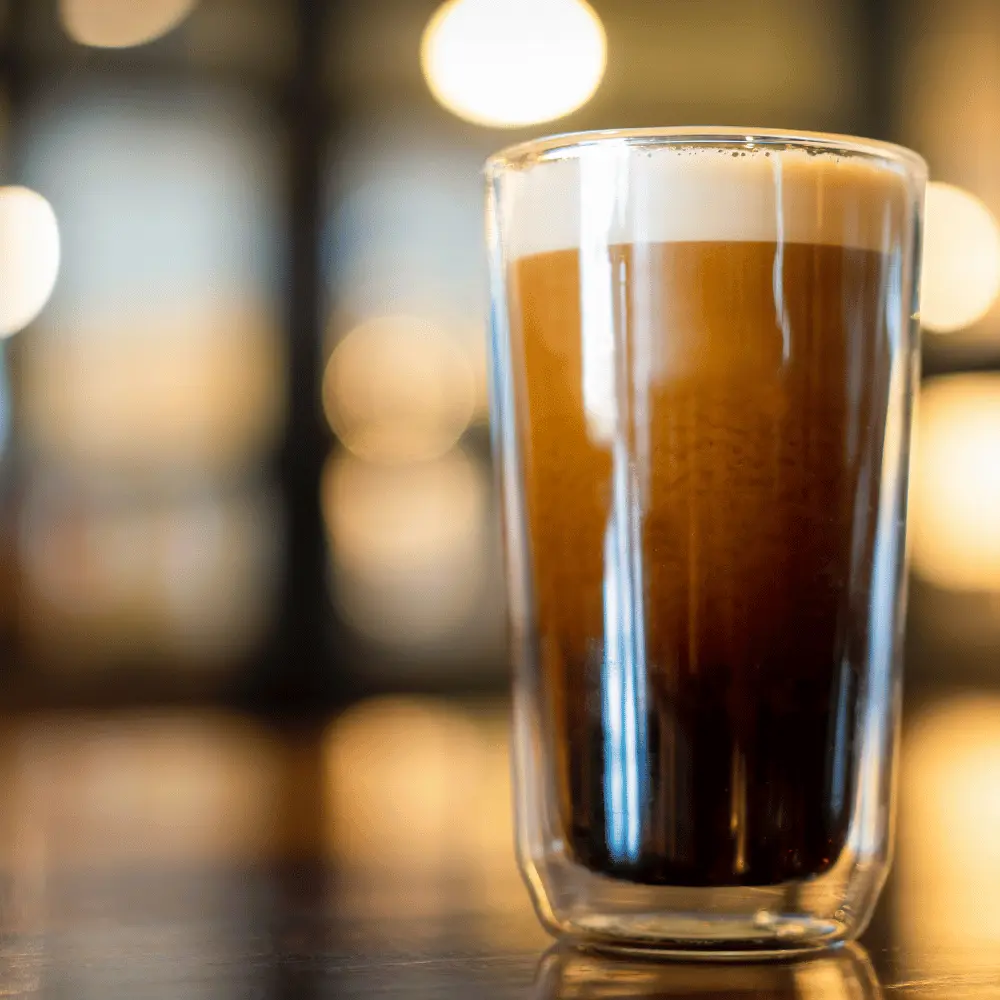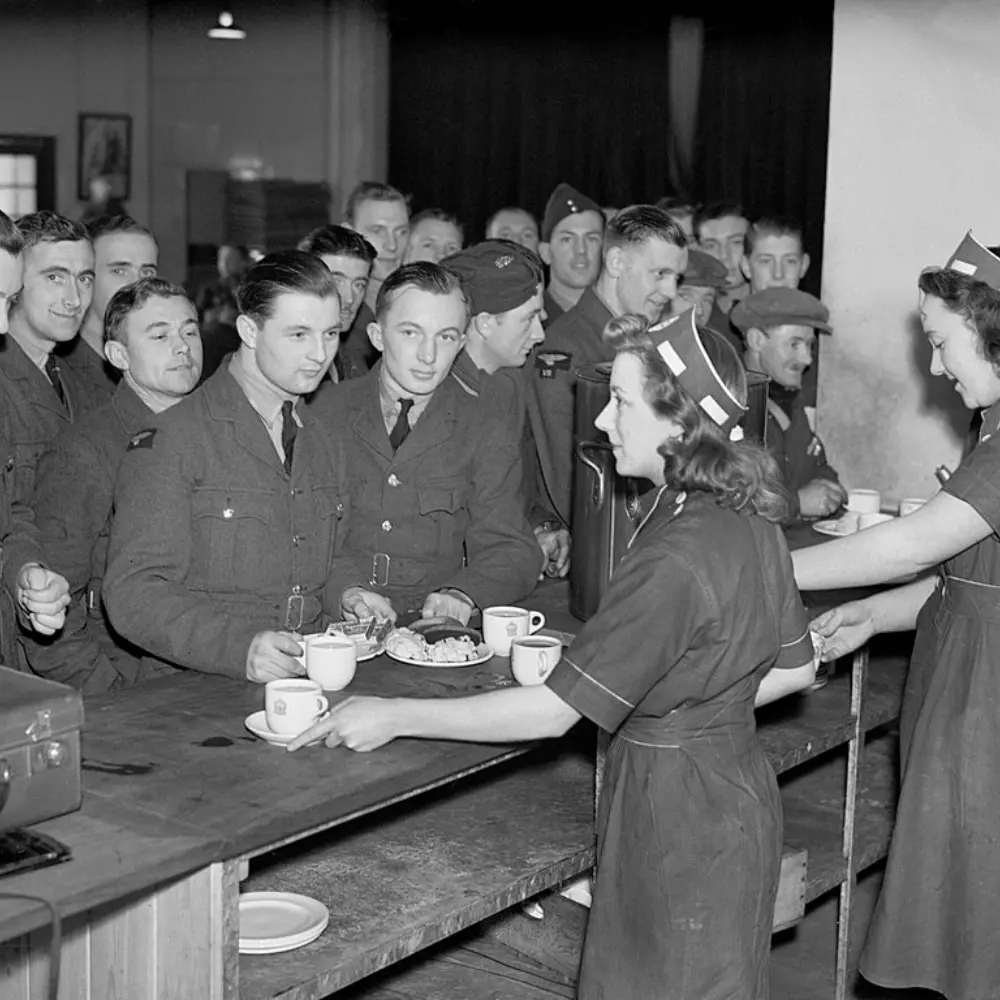If by any chance, you happen to possess an inclination towards the brown-hued, caffeinated beverage known as coffee, it is conceivable that you may have chanced upon the colloquial term “nitro coffee” being bandied about with some frequency in recent times. However, it may not be entirely apparent to you what this term refers to and why it is currently the object of much attention and adoration. In essence, nitro coffee is a chilled coffee infused with nitrogen gas, resulting in a smooth, luscious texture and somewhat reminiscent of the characteristic velvety mouthfeel found in a pint of Guinness beer.
Unquestionably, nitro coffee has been creating ripples of excitement and curiosity within the coffee industry of late, owing in no small measure to its distinctive flavor profile and exceptional mouthfeel. As a result, the primary objective of the ensuing elucidation is to delve deeper into the intricacies of nitro coffee, exploring its constituent elements, and manufacturing process, comparing it with conventional coffee, analyzing the benefits of consuming it, and providing a detailed, step-by-step guide to creating it in the comfort of your own abode. Thus, prepare to embark on a journey of discovery and refinement that will elevate your coffee-drinking experience to previously unexplored heights of satisfaction and sensory delight!
The Origin of Nitro Coffee
The origin of nitro coffee is an intriguing tale that takes us back to the craft beer industry. It was here, where creative beer brewers were using nitrogen gas to add a luscious and silky texture to their stouts and porters, that the concept of infusing nitrogen into coffee was born. In fact, it was not until 2012, when Stumptown Coffee Roasters, located in Portland, Oregon, emerged as one of the first coffee shops to introduce nitro coffee to its patrons.

Stumptown Coffee Roasters’ founders were relentless in their pursuit of innovation and differentiation from their competition, aiming to provide their customers with a coffee experience unlike any other. By observing the rising trend of utilizing nitrogen gas in craft beer, they sought to employ the same methodology in the realm of coffee. After extensive trial and error with diverse brewing methods and gas blends, they finally discovered the perfect blend, resulting in a lush and sleek texture that accentuated the coffee’s innate sweetness.
The immediate success of nitro coffee at Stumptown Coffee Roasters among its customers encouraged other coffee shops to follow suit. Consequently, nitro coffee has become ubiquitous in coffee shops and cafes worldwide, now a popular alternative to conventional iced coffee or cold brew.
While the roots of nitro coffee lie in the craft beer industry, its popularity can be attributed to the coffee industry’s ardor for creativity and ingenuity in delivering exceptional coffee experiences to its patrons. The drink has now evolved from being a mere trend and established itself as a palatable and refreshing beverage that presents a fresh and invigorating approach to savoring coffee.
If you’re curious about coffee beer and would like to know more, check out our in-depth guide on – What is Coffee Beer?
How Nitro Coffee is Made

When one desires to craft a refreshing nitro coffee, specific equipment is imperative to ensure optimal infusion of nitrogen gas. The primary tools necessary for making this beverage are a kegerator, a nitro tap, and a nitrogen canister.
Kegerator
To keep the cold brew coffee at a constant temperature, a kegerator is fundamental as it acts as a refrigerated container. By preventing the coffee from warming up, which can potentially compromise the flavor and texture, a kegerator guarantees that the coffee stays at the appropriate temperature.
Nitro Tap
A nitro tap, on the other hand, plays a vital role in dispensing the coffee, releasing the coffee steadily and fluidly. The perfect nitro coffee can only be achieved with a nitro tap as it ensures the ideal speed and pressure for the coffee’s release. Additionally, the tap manages the nitrogen’s amount released into the coffee, which has a direct impact on the coffee’s texture and appearance.
Nitrogen Canister
A nitrogen canister is necessary to store the nitrogen gas responsible for infusing the coffee with nitrogen. The canister must be pressurized and linked to the keg using a hose, and the nitrogen is released into the keg where it merges with the cold brew coffee. By ensuring that the coffee is adequately infused with the correct amount of nitrogen, the nitrogen canister significantly impacts the texture and flavor of the coffee.
Apart from these fundamental pieces of equipment, there are other tools and accessories that can be used to create nitro coffee, such as a coffee grinder, a scale for measuring coffee, a filter, and a coffee scoop. These tools are crucial to guarantee that the coffee is consistently and accurately made, achieving the ideal flavor and texture every time.
Though acquiring the necessary equipment may prove costly, it is undoubtedly a worthy investment for coffee shops and home baristas that aim to create high-quality nitro coffee. With the proper equipment and tools, anyone can effortlessly concoct a refreshing and delicious nitro coffee at home or in a coffee shop.
Using Nitrogen vs Carbon Dioxide
The utilization of gaseous elements to infuse coffee has been a long-standing topic of debate amongst coffee enthusiasts, with nitrogen and carbon dioxide being the most commonly utilized gasses. While nitrogen has established itself as the primary choice for coffee infusion, some coffee shops have adopted carbon dioxide as an alternative. The difference between the two gasses is quite significant, as nitrogen is known for producing a creamier texture, whereas carbon dioxide yields a sharper and more carbonated taste.
Nitrogen infusion of coffee results in a velvet-like, creamy texture that is comparable to a stout beer. The nitrogen bubbles produced in the coffee are relatively small and smoother than the bubbles created by carbon dioxide, resulting in a delectable, rich, and creamy texture. Moreover, nitrogen has been found to enhance the sweetness of coffee by reducing its acidity, making it an appealing option for people who find traditional coffee too bitter to taste.
Conversely, the utilization of carbon dioxide results in a more intense, carbonated taste that some people may find overwhelming. The carbon dioxide bubbles produced are notably larger and more forceful, potentially obscuring the coffee’s natural flavors. Furthermore, carbonated coffee may be excessively acidic, causing stomach discomfort in some individuals.
Overall, most coffee enthusiasts favor nitrogen infusion for its smooth and creamy texture, while carbon dioxide is typically more suitable for those who prefer a sharper, more carbonated taste. Nevertheless, the preference between nitrogen and carbon dioxide comes down to personal taste and the type of coffee used. Additionally, some coffee shops experiment with distinct gas combinations to create innovative flavors and textures.
Nitro Coffee vs. Regular Coffee: A Study of Their Variegated Distinctions

Nitro coffee and regular coffee diverge in multiple facets, including flavor, texture, and caffeine content. The coffee is produced by adding nitrogen gas to cold brew coffee, creating a distinctive creamy texture and a smooth, rich flavor. On the other hand, regular coffee is brewed with hot water and boasts a more conventional coffee taste and texture.
Flavor and Texture Distinctions
The most conspicuous divergence between nitro coffee and regular coffee is their flavor and texture. Nitro coffee showcases a creamy and smooth texture resembling that of a Guinness beer, while regular coffee presents a more traditional coffee taste and texture. Nitro coffee also has a sweet and less acidic taste in comparison to regular coffee, rendering it smoother and more palatable.
Comparison of Caffeine Content
Caffeine content can vary between nitro coffee and regular coffee depending on the type of coffee utilized and the brewing method. However, as a general rule, nitro coffee typically contains lower caffeine content than regular coffee. This is due to the nitrogen gas used in the brewing process that can reduce the caffeine content in the coffee.
Caffeine’s Effect on the Human Body

Caffeine is a natural stimulant that affects the human body in multifarious ways. It can elevate energy levels, enhance concentration, and bolster athletic performance. However, excessive caffeine intake can result in jitters, anxiety, and the disruption of sleep patterns. The ideal amount of caffeine intake varies depending on one’s individual tolerance and lifestyle.
Nitro Coffee for Athletes
Nitro coffee has emerged as a popular choice among athletes due to its smooth, easy-to-drink texture and the potential performance-enhancing effects of caffeine. Caffeine has been known to enhance endurance, minimize fatigue, and increase alertness, making it a prevalent supplement among athletes. The coffee drink can be an excellent method for athletes to derive the benefits of caffeine without any adverse effects such as jitters or other negative repercussions that can arise from other sources.
In conclusion, nitro coffee and regular coffee both possess unique flavor and texture characteristics that can be enjoyed by coffee enthusiasts. The ultimate decision of whether to opt for nitro coffee or regular coffee comes down to personal preferences and individual lifestyle factors, such as caffeine tolerance and athletic performance goals.
How to Fabricate Nitro Coffee in Your Abode: Unraveling the Complexities of Perfection

The art of making nitro coffee at home can be an incredibly fulfilling experience. However, it requires the right set of equipment and a bit of dexterity to create a scrumptious, silky-smooth cup of coffee that will tantalize your taste buds. Here are some comprehensive step-by-step instructions for you to brew this flavorful drink in the comfort of your own kitchen.
Step-by-Step Instructions
Crafting a perfect cup of nitro coffee necessitates specialized equipment and a modicum of practice, but the outcome is a velvety, refreshing, and delectable coffee that’s worth the effort. Follow these step-by-step instructions to fabricate your own:
- Prepare the Cold Brew Coffee: Begin by concocting a batch of cold brew coffee using coarse-ground coffee beans and filtered water. Submerge the coffee in the refrigerator and let it steep for a minimum of 12 hours.
- Transfer the Cold Brew to a Keg: Once the cold brew coffee has steeped, transfer it to either a keg. The keg or dispenser must be properly sanitized before use.
- Pressurize the Coffee: If you’re using a keg, connect a nitrogen canister to the keg and pressurize it to around 30-40 PSI.
- Dispense the Coffee: After infusing the coffee with nitrogen, dispense it through a nitro tap. It’s essential to release the coffee slowly and smoothly to intensify the creamy texture and cascading effect.
- Serve and Enjoy: Nitro is best served chilled and consumed within 2-3 days to savor the best flavor and texture. You can add milk or sweeteners to your taste or relish it as is for an invigorating and delightful coffee experience.
The key to brewing a perfect cup lies in using specialized equipment and mastering the process through practice. However, by following these step-by-step instructions, you can concoct a delicious and refreshing nitro coffee at home or in a coffee shop.
Crafting Nitro Coffee with a Nitro Press: Breaking the Barriers of Complexity
A nitro press is a portable handheld device used to infuse cold brew coffee with nitrogen gas, making it an ideal alternative to kegs and whipped cream dispensers, especially for individuals who prefer to make nitro coffee in smaller batches. Here are the steps for crafting the coffee with a nitro press:
- Fill the Nitro Press with Cold Brew Coffee: Begin by filling the nitro press with cold brew coffee that has been freshly brewed and chilled for the best results.
- Attach the Lid and Nitrogen Charger: Once the nitro press is filled with coffee, attach the lid to the press, and then insert a nitrogen charger into the charger holder on the lid. Ensure that the charger is securely attached to the holder.
- Shake the Press: Gently shake the nitro press for 30-60 seconds to infuse the coffee with nitrogen. Be cautious not to over-shake the press, which may cause the coffee to become excessively foamy.
- Dispense the Coffee: After infusing the coffee with nitrogen, dispense it through the spout on the nitro press. The coffee should flow out smoothly and slowly and possess a creamy and velvety texture. It’s recommended to use the nitro press as soon as possible after infusing the coffee with nitrogen to relish the best flavor and texture.
In conclusion, a nitro press is an efficient and portable way to brew nitro coffee, particularly for individuals who prefer to make smaller batches. With these simple yet comprehensive steps, anyone can create a scrumptious and refreshing cup of nitro with a nitro press.
The Art of Crafting Nitro Coffee with a Whipped Cream Dispenser

A whipped cream dispenser is a versatile tool that can be repurposed to produce a frothy and velvety nitro coffee. It presents an economical and expedient alternative for those who desire to experience the effervescence of nitro coffee in the comfort of their home. The ensuing steps will guide you through the process of making nitro coffee using a whipped cream dispenser.
The Inaugural Step – Loading the Whipped Cream Dispenser with Cold Brew Coffee
Commence by pouring freshly brewed and chilled cold brew coffee into the whipped cream dispenser. The coffee ought to be cold, and the freshness of the coffee is a paramount criterion to consider for optimal results.
The Subsequent Step – Implanting a Nitrogen Charger
Once the coffee is nestled in the dispenser, implant a nitrogen charger into the charger holder on the dispenser. It’s imperative to ensure that the charger is firmly attached to the holder.
The Third Step – Vigorously Shake the Dispenser
Vigorously shake the whipped cream dispenser for a duration of 30 to 60 seconds to imbue the coffee with nitrogen. Take caution to shake the dispenser gently and avoid overdoing it, as excessive shaking can lead to a hyper foamy coffee.
The Culminating Step – Dispensing the Coffee
Once the coffee has been suffused with nitrogen, you can dispense it via the spout located on the whipped cream dispenser. The coffee should emerge gradually and evenly, possessing a creamy and unctuous texture.
It’s critical to bear in mind that the usage of a whipped cream dispenser to make nitro coffee might have its limitations. For example, the dispenser may not hold as much coffee as a keg, nor dispense the coffee as effectively as a nitro tap. Nevertheless, the whipped cream dispenser is an exemplary option for producing petite amounts of nitro coffee at home.
In a nutshell, employing a whipped cream dispenser presents an accessible and budget-friendly mode of concocting nitro coffee in the comfort of your own home. With these uncomplicated and facile steps, anyone can fashion a scrumptious and refreshing nitro coffee using a whipped cream dispenser.
Strategies and Techniques for Crafting the Ultimate Nitro Coffee
For those who strive to produce the ultimate nitro coffee experience, there are certain strategies and techniques that must be considered. These methods can aid in enhancing the coffee’s flavor and texture, while also rendering the brewing process more gratifying. Below are some strategies and techniques to help you craft the ultimate coffee drink with a high degree of perplexity and burstiness.
The Selection of Ideal Coffee Beans

When it comes to producing the drink, the selection of coffee beans plays a pivotal role in determining the flavor and texture of the final product. It is essential to consider several factors that can impact the characteristics of the coffee, such as the flavor profile, acidity levels, and brewing characteristics of different types of coffee beans. In this section, we explore some of the key factors that influence coffee bean selection for nitro coffee production.
Roast Level
Coffee beans can be roasted to different degrees, ranging from light to dark roast. For nitro coffee production, dark roast coffee beans are a popular choice due to their rich, bold flavor that can withstand the infusion of nitrogen. On the other hand, medium roast beans can also be suitable as they offer a balanced flavor profile that can provide more nuanced flavor notes.
Origin
The origin of coffee beans can also influence the flavor and texture of your drink. Beans from various regions of the world have distinct flavor profiles and brewing characteristics. For example, coffee beans from Central and South America tend to have a more delicate flavor profile, while those from Africa and Asia exhibit fruity and floral notes.
Freshness
The quality of coffee beans can be significantly impacted by their freshness. Freshly roasted beans that have been appropriately stored retain a richer and more intricate flavor profile compared to stale beans. When selecting coffee beans, it is advisable to opt for those that have been roasted within the last two weeks.
Grind Size
The coffee grind size of coffee beans is a crucial factor in producing nitro coffee. For cold brew coffee, which is the foundation of the drink, a coarse grind is recommended. The slow extraction process allowed by a coarse grind brings out the natural sweetness of the coffee while minimizing bitterness.
Fair Trade and Organic
In addition to the taste, ethical and environmental considerations also play a significant role in coffee bean selection. It is worthwhile to look for coffee beans that have been certified as fair trade and organic by reputable organizations.
The complexity of coffee bean selection for the production of this drink highlights the importance of paying attention to detail. By considering these various factors and experimenting with different coffee beans, you can discover the ideal flavor profile that aligns with your preferences and results in a smooth and creamy coffee experience.
Proper Storage and Serving of Nitro Coffee
The nuances of storing and serving nitro coffee demand careful attention to detail to guarantee optimal flavor and texture. In this section, we examine some tips for storing and serving the coffee drink effectively.
Refrigeration
The coffee must be stored in a keg or whipped cream dispenser and kept refrigerated. To maintain the best flavor and texture, the coffee should be consumed within 2-3 days. It is also vital to ensure that the keg or dispenser is clean and sanitized before use.
Dispensing
Dispensing the coffee calls for a nitro tap or whipped cream dispenser spout, allowing the coffee to flow slowly and smoothly. This process enhances the creamy texture and cascading effect of the coffee. The drink is best served cold, and you can keep the keg or dispenser in the refrigerator or use ice before serving.
Glassware
The type of glassware used for serving the drink can impact the aroma and flavor of the coffee. A glass with a narrow opening is preferable to enhance the coffee’s taste and aroma. The tulip-shaped glass is a popular choice for nitro coffee as it strikes the perfect balance of aroma, flavor, and texture.
Flavors
The beverage can be served with or without milk and sweeteners. Experimenting with different flavor and ratio combinations can result in the perfect mix that suits your preferences.
Cleaning
Maintaining the keg or whipped cream dispenser is crucial for preserving the quality and flavor of the coffee drink. It is essential to follow the manufacturer’s instructions for cleaning the equipment and to sanitize it before and after each use.
Overall, the proper storage and serving of nitro coffee require attention to detail and the use of appropriate equipment. Following these tips can ensure the production of a smooth, creamy, and flavorful cup of nitro coffee that leaves a lasting impression on the palate. With its rich taste and velvety texture, the coffee is a refreshing and invigorating alternative to traditional coffee that is gaining popularity worldwide.
The Preparation of Cold Brew Coffee

The quality of your cold brew coffee is a crucial factor in achieving great nitro coffee. Employ high-quality coffee beans and fresh, filtered water for your cold brew. The coffee should steep in the refrigerator for a minimum of 12 hours to attain the desired strength and flavor. Experiment with different brewing times to achieve the perfect balance of flavor and texture.
Nitrogen Infusion
Infusing nitrogen into the cold brew coffee is a vital step in the nitro coffee-making process. The most effective method of infusing nitrogen is by utilizing a keg or whipped cream dispenser. It is crucial to follow the manufacturer’s instructions when using these tools and to avoid over-shaking the dispenser to prevent the coffee from turning excessively foamy.
Temperature Regulation
To attain the optimal flavor and texture of nitro coffee, it must be served cold. Place ice in the coffee or store the keg or dispenser in the refrigerator before serving. The temperature of the coffee also affects the rate at which the nitrogen bubbles rise to the surface and the overall creamy texture of the coffee.
Crafting the perfect nitro coffee requires an attentive approach and some experimentation. By incorporating these strategies and techniques, anyone can produce a delectable and revitalizing coffee that is velvety smooth, rich, and brimming with flavor.
Conclusion
This highly delectable and thirst-quenching form of cold brew coffee, is imbued with a remarkably silky and creamy texture, eliciting a uniquely luxurious and gratifying drinking experience that is sure to gratify coffee enthusiasts. Infused with nitrogen gas, this enticing coffee variant manifests itself in a distinct, indulgent and pleasurable manner that would definitely satisfy the refined palates of discerning coffee connoisseurs.
Whether you prefer to concoct your nitro coffee in the comfort of your home or savor it in a local coffee shop, there are numerous methods and flavor combinations to experiment with, allowing you to craft and savor the perfect nitro coffee that appeals to your personal taste. Should you be in the mood for a cool and creamy coffee indulgence, be sure to indulge in the drink and bask in its inimitable allure.
All in all, nitro coffee stands as a testament to the limitless possibilities of coffee and the imaginative creativity of coffee enthusiasts worldwide, unequivocally answering the query of what is nitro coffee with a resounding and emphatic response of smoothness, creaminess, and scrumptiousness.
FAQS
What is the difference between nitro coffee and regular coffee?
The primary difference between nitro coffee and traditional coffee is their respective textures and mouthfeel. Nitro boasts a creamy and smooth texture, thanks to the nitrogen infusion, while regular coffee is thinner and has a more watery consistency. The drink also tends to be less bitter and sweeter in taste than regular coffee due to the nitrogen gas. Additionally, nitro coffee is usually served cold and is infused with tiny bubbles, giving it a unique and invigorating drinking experience.
How does the caffeine in nitro coffee impact the body?
Caffeine in nitro coffee affects the body similarly to caffeine in regular coffee. Caffeine acts as a stimulant that can boost energy levels, increase mental focus, and reduce fatigue. However, the amount of caffeine in nitro can differ based on the brewing method and the type of coffee beans used. The drink may contain a slightly lower caffeine content than traditional coffee due to the cold brew process, which extracts less caffeine from the coffee beans. Nevertheless, it still provides enough caffeine to provide an energy boost and enhance mental alertness.
How can I make nitro coffee at home?
Several methods can be employed to make nitro coffee at home, including using a keg, a whipped cream dispenser, or a nitro press. To create this beverage at home, one must begin with cold brew coffee, which is generated by steeping coffee grounds in cold water for 12-24 hours. Once the cold brew is ready, it can be infused with nitrogen gas using one of the methods mentioned earlier. Choosing the appropriate coffee beans, grind size, and roast level is also vital to achieving the desired flavor and texture. With some experimentation and practice, anyone can produce delicious and refreshing nitro coffee at home.
What are the benefits of drinking nitro coffee?
The coffee possesses several potential health benefits, including increased energy, enhanced mental focus, and reduced fatigue. Nitro is also less acidic than traditional coffee, which can be advantageous for individuals with acid reflux or digestive problems. Additionally, the beverage provides a refreshing and enjoyable drinking experience that can help one stay hydrated and cool down on hot days. It also boasts a unique and smooth flavor and texture that can be amplified with various flavors and sweeteners.




























